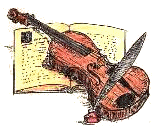
Hidden Talents and Brain Maps
Hiddentalents.org
© 2001 Stephen Holland --- sholland@softwaves.net
| 1 Outer | 3 Inner |
 Hidden Talents and Brain Maps Hiddentalents.org © 2001 Stephen Holland --- sholland@softwaves.net
|
Home | Index | Outer parts | |||||
| Input / Output | Inner parts | |||||||
| L / R Sides | Patchwork Quilt | |||||||
| Brain Maps | Print maps | |||||||
| LEFT Brain | RIGHT Brain | |||||||
| Activities | L / R Types | |||||||
| Balanced vs Expert | Men vs Women | |||||||
| Feedback | Sources | |||||||
|
|
||||||||
| 2. Input - Output |
(1.) Senses go to the back of the brain,
where (2.) they are analyzed for importance.
For example, the back of the brain analyzes
the sound of a siren by comparing it with
past memories and learning, to determine
what kind it is, how far away it is, and
so on.  If the back of the brain determines that
the siren is important, the information is
passed to the front of the brain for decisions. If the back of the brain determines that
the siren is important, the information is
passed to the front of the brain for decisions.
(3a.) The central frontal lobe is the "Yes" area, putting together plans of action. This is also the creative area to make new plans."Let's skip school and run after the fire truck." (3b.) The lower frontal lobe above the eyes is the "No" area, which has learned inhibitions. "No, we should stay in class." (4.) If the "Yes" impulses are stronger, then the message is sent to the "premotor" area. This is where we learn how to do things, such as sneak quietly out the door. (5.) The actual muscle control signals are automatically sent down to the muscles. |